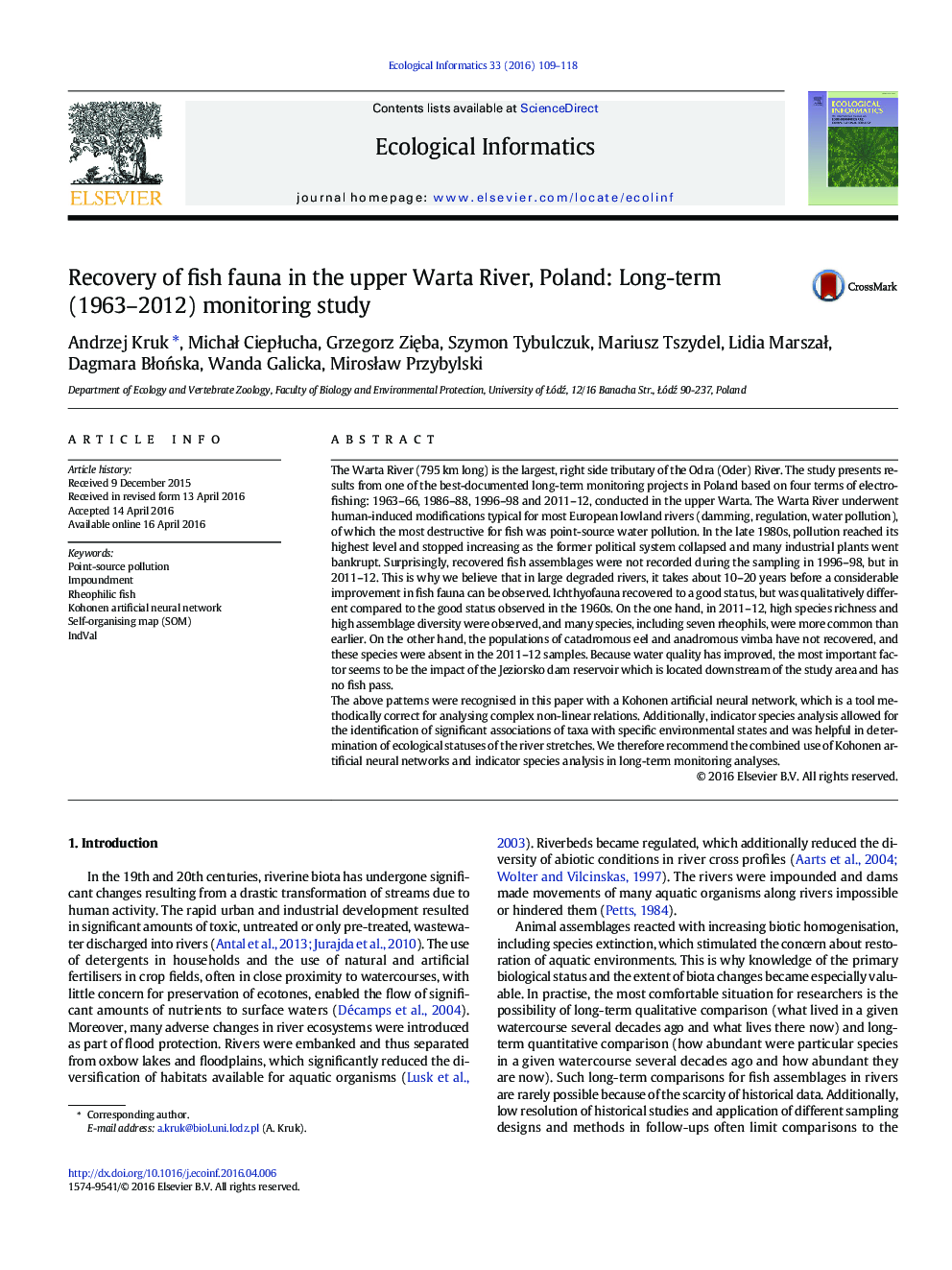| کد مقاله | کد نشریه | سال انتشار | مقاله انگلیسی | نسخه تمام متن |
|---|---|---|---|---|
| 4374787 | 1617201 | 2016 | 10 صفحه PDF | دانلود رایگان |
• This is one of the best-documented long-term fish monitoring projects in Poland.
• Kohonen artificial neural network and the IndVal index were applied jointly.
• Ichthyofauna recovered with a considerable delay compared to pollution decline.
• Good ecological status differs qualitatively from good ecological status in the 1960s.
• Diadromous fish species have not recovered because of a dam without a fish pass.
The Warta River (795 km long) is the largest, right side tributary of the Odra (Oder) River. The study presents results from one of the best-documented long-term monitoring projects in Poland based on four terms of electrofishing: 1963–66, 1986–88, 1996–98 and 2011–12, conducted in the upper Warta. The Warta River underwent human-induced modifications typical for most European lowland rivers (damming, regulation, water pollution), of which the most destructive for fish was point-source water pollution. In the late 1980s, pollution reached its highest level and stopped increasing as the former political system collapsed and many industrial plants went bankrupt. Surprisingly, recovered fish assemblages were not recorded during the sampling in 1996–98, but in 2011–12. This is why we believe that in large degraded rivers, it takes about 10–20 years before a considerable improvement in fish fauna can be observed. Ichthyofauna recovered to a good status, but was qualitatively different compared to the good status observed in the 1960s. On the one hand, in 2011–12, high species richness and high assemblage diversity were observed, and many species, including seven rheophils, were more common than earlier. On the other hand, the populations of catadromous eel and anadromous vimba have not recovered, and these species were absent in the 2011–12 samples. Because water quality has improved, the most important factor seems to be the impact of the Jeziorsko dam reservoir which is located downstream of the study area and has no fish pass.The above patterns were recognised in this paper with a Kohonen artificial neural network, which is a tool methodically correct for analysing complex non-linear relations. Additionally, indicator species analysis allowed for the identification of significant associations of taxa with specific environmental states and was helpful in determination of ecological statuses of the river stretches. We therefore recommend the combined use of Kohonen artificial neural networks and indicator species analysis in long-term monitoring analyses.
Journal: Ecological Informatics - Volume 33, May 2016, Pages 109–118
